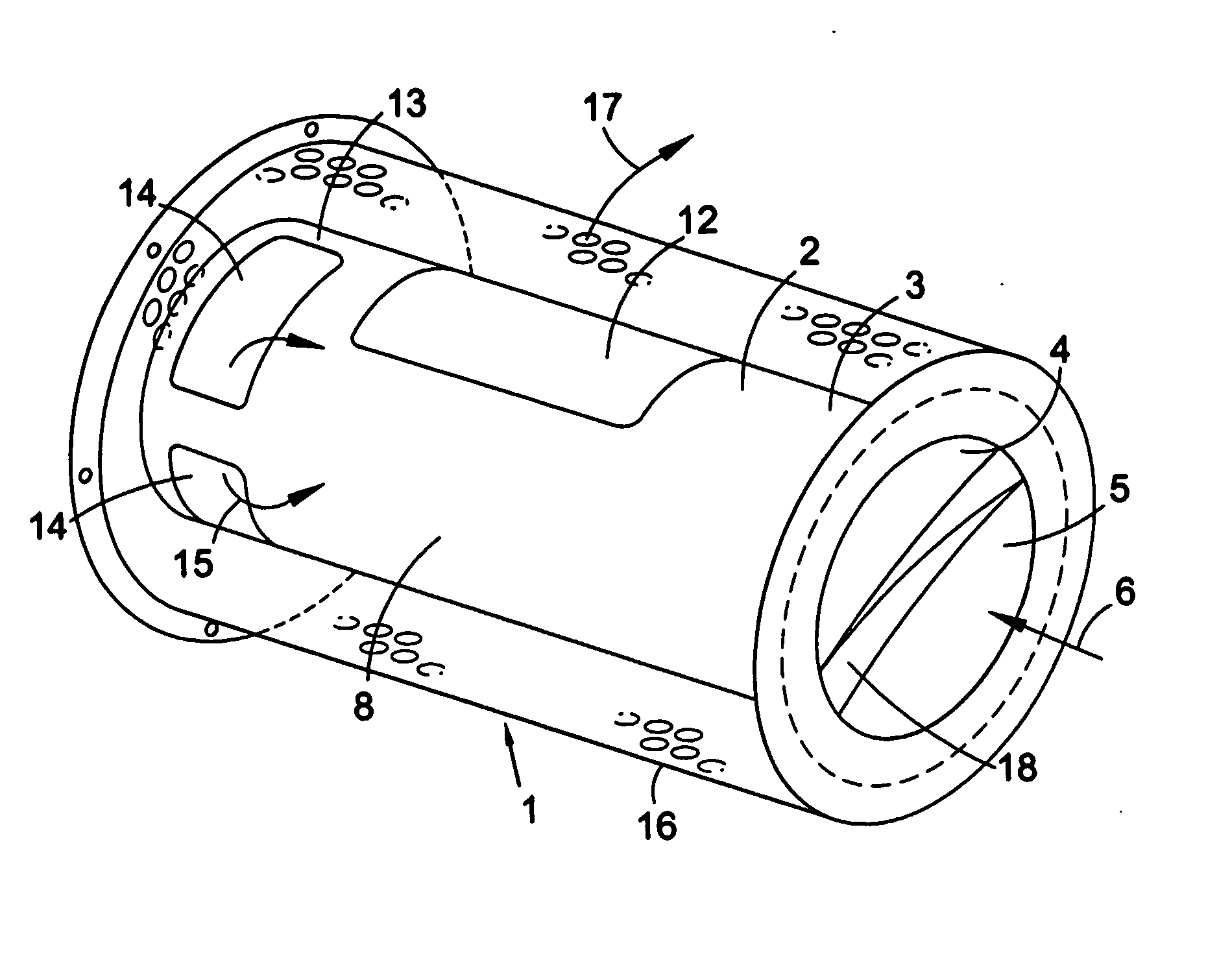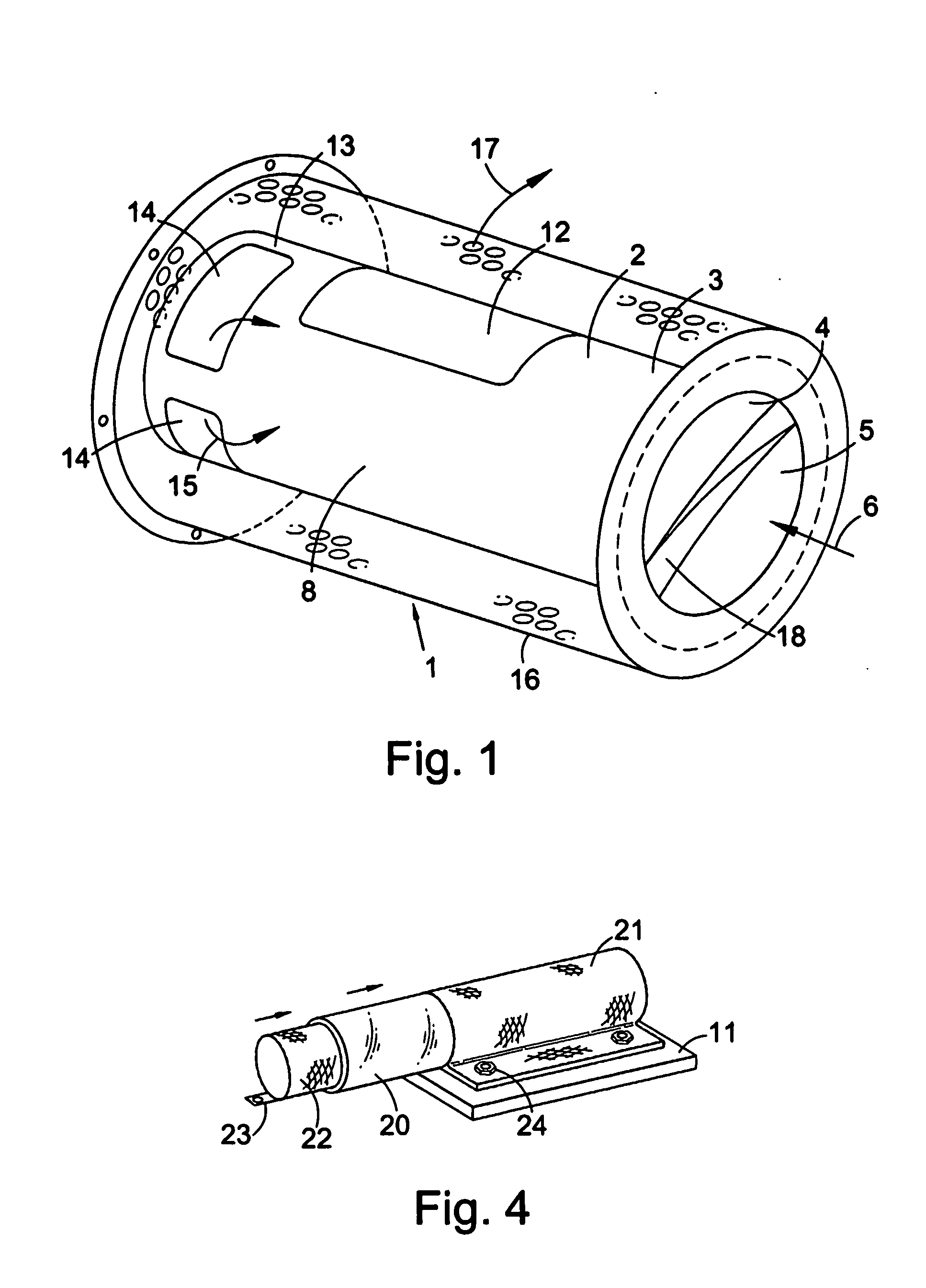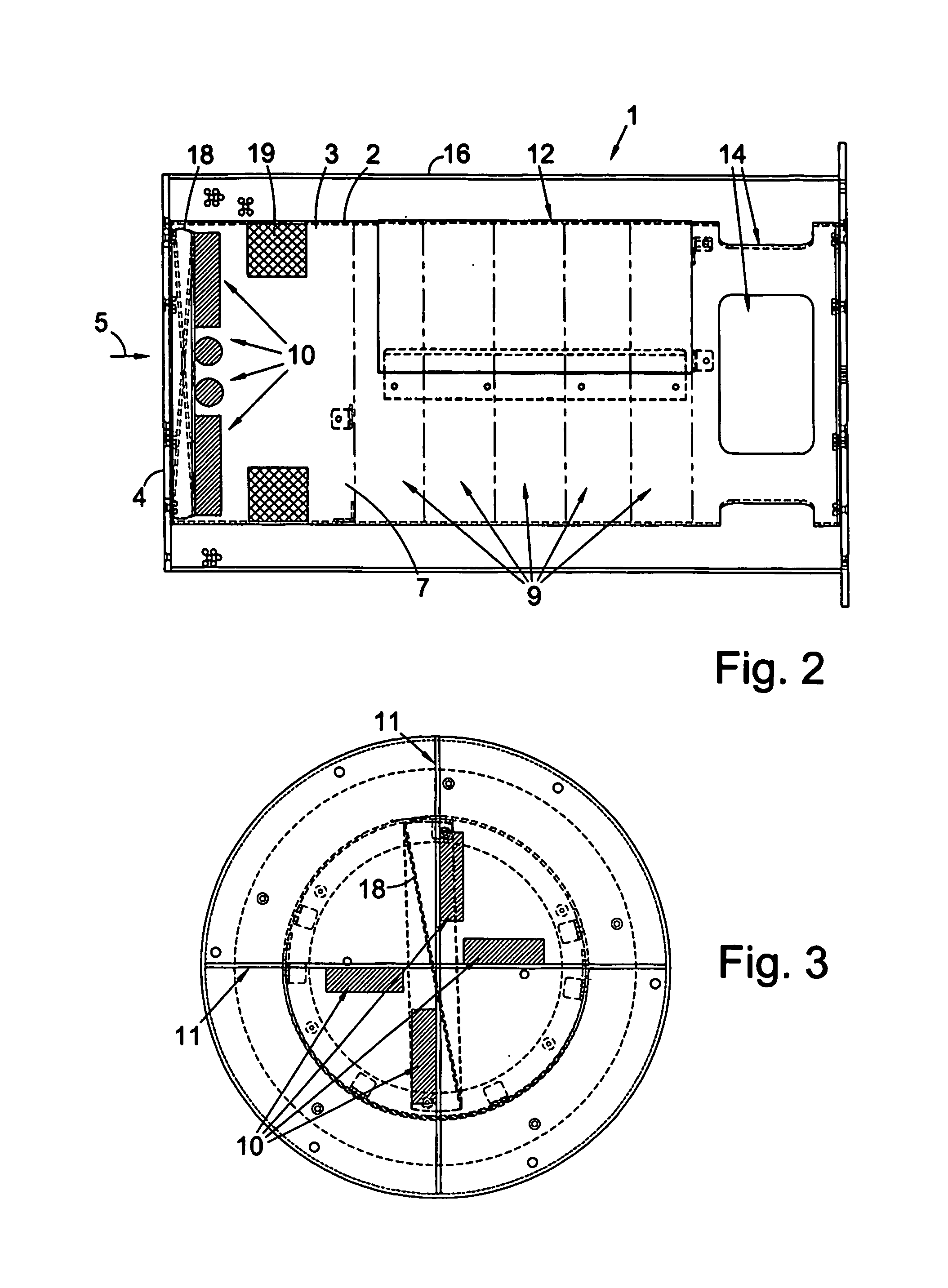Air filtration device
a filter and air technology, applied in chemical/physical/physical-chemical processes, electrostatic separation, chemical/physical processes, etc., can solve the problems of filter inability to remove small viral particles, high concentration of ozone, and high toxicity at high concentrations
- Summary
- Abstract
- Description
- Claims
- Application Information
AI Technical Summary
Benefits of technology
Problems solved by technology
Method used
Image
Examples
example 1
Cartridge for use in an Aircraft Air Supply System
Construction
[0047]FIG. 1 shows an air filtration cartridge 1 of the invention suitable for use in the treatment of air in a forced airflow air supply system of an aircraft (not shown). The cartridge 1 comprises an inner casing 2 having an upstream stage 3 defining a chamber 4 having an inlet 5 for receiving a forced airflow 6. The chamber 4 has an outlet 7 which leads into a downstream stage 8 comprising a filter holder and mounting a stack of 10 25 mm thick high airflow electrostatic filters 9 (see FIG. 2), which are preferably 3M Filtrete™ HAF filters.
[0048] Inside the chamber 4 is mounted an array of four generally radially extending angularly distributed low power coronal discharge ozone generator devices 10, supported on insulating material struts 11 (see FIG. 3). The downstream stage 8 is provided with a removable access panel 12 for facilitating insertion and removal of the filters 9. At the downstream end portion 13 of t...
example 2
Anti-Microbial Performance of an M4 / 4 Device
[0053] The invention has been developed into a range of devices designed for microbiological decontamination of atmospheres. This embodiment employs closed-coupled field technology for the contained generation of an oxidising field, in tandem with electrostatic filtration of the air stream. Combining these technologies in a manner that affords a high flow-rate permits the effective treatment of large volumes of atmosphere.
M4 / 4 Device
[0054] This embodiment of the invention comprises four fans connected and switched so as to be progressively activated in order to provide a range of airflow rates: [0055] Speed 1=160 m3 / hour Speed 2=320 m3 / hour [0056] Speed 3=480 m3 / hour Speed 4=540 m3 / hour
[0057] Two modes of filtration were used in various experiments. Either a HEPA filter or an HAF (3M Filtrete™) post-filter were fitted and their relative effects compared.
Ozone Production Characteristics
[0058] The European standard for atmospheric l...
example 3
Single Pass Anti-Microbial Competence of M4 / 4 Device
[0065] The following experimental data reports on the performance of the device in relation to the reduction of single pass microbial challenges. Performance at each of four flow rates has been determined for a range of organisms with electrostatic filtration in place.
TABLE 4M4 / 4 single pass performance with electrostatic filtrationChallengeSpeed 1Speed 2Speed 3Speed 4levelRecoveryRecoveryRecoveryRecoveryOrganismcfu / l-1cfu / l-1cfu / l-1cfu / l-1cfu / l-1A. niger8.80E+06S.7.40E+06C. albicans6.00E+06S. aureus7.10E+06B. cereus2.20E+061.30E+02
PUM
| Property | Measurement | Unit |
|---|---|---|
| power rating | aaaaa | aaaaa |
| concentration | aaaaa | aaaaa |
| concentration | aaaaa | aaaaa |
Abstract
Description
Claims
Application Information
 Login to View More
Login to View More - R&D
- Intellectual Property
- Life Sciences
- Materials
- Tech Scout
- Unparalleled Data Quality
- Higher Quality Content
- 60% Fewer Hallucinations
Browse by: Latest US Patents, China's latest patents, Technical Efficacy Thesaurus, Application Domain, Technology Topic, Popular Technical Reports.
© 2025 PatSnap. All rights reserved.Legal|Privacy policy|Modern Slavery Act Transparency Statement|Sitemap|About US| Contact US: help@patsnap.com



